 Purdue University - Extension - Forestry and Natural Resources
Purdue University - Extension - Forestry and Natural Resources
Got Nature? Blog
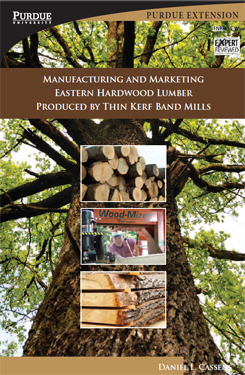 This full-color, soft-cover book brings together a lifetime of sawmill experience and technical training to help readers solve lumber manufacturing problems and save money. It includes chapters on wood quality and characteristics, softwood lumber grading, logs for fine face veneer, wood residues and potential markets, sales techniques and more. It is a comprehensive reference guide for those who manufacture and market Eastern hardwood lumber in the United States. While it’s written for owners of small, home-based lumber mills, the information is also useful for traditional lumber manufacturers.The author has spent 30 years in close association with both the hardwood lumber and veneer-producing industries, as well as with the users of hardwood products. He has participated in hundreds of plant visits, organized and conducted many educational seminars and written extensively.
This full-color, soft-cover book brings together a lifetime of sawmill experience and technical training to help readers solve lumber manufacturing problems and save money. It includes chapters on wood quality and characteristics, softwood lumber grading, logs for fine face veneer, wood residues and potential markets, sales techniques and more. It is a comprehensive reference guide for those who manufacture and market Eastern hardwood lumber in the United States. While it’s written for owners of small, home-based lumber mills, the information is also useful for traditional lumber manufacturers.The author has spent 30 years in close association with both the hardwood lumber and veneer-producing industries, as well as with the users of hardwood products. He has participated in hundreds of plant visits, organized and conducted many educational seminars and written extensively.
This 380-page book was produced in conjunction with the U.S. Forest Service.
View sample pages of the book or place an order through The Education Store, Manufacturing and Marketing Eastern hardwood Lumber Produced by Thin Kerf Band Mills.
Resources
Lumber from Hardwood Trees, The Education Store
The Education Store, Purdue Extension Resource Center (Find apps, publications, videos and much more)
Daniel Cassens, Professor of Wood Products
Department of Forestry and Natural Resources, Purdue University
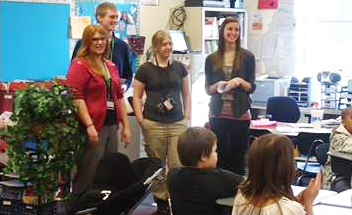 FNR is pleased to announce a new program that will provide undergraduate extension internship opportunities for qualified students this summer. This is an exciting program with the potential to build on an already strong set of FNR extension programs while providing valuable experience and training for undergraduates.
FNR is pleased to announce a new program that will provide undergraduate extension internship opportunities for qualified students this summer. This is an exciting program with the potential to build on an already strong set of FNR extension programs while providing valuable experience and training for undergraduates.
Purdue University’s Department of Forestry and Natural Resources seeks candidates for extension internship positions. The department extension program has a broad environmental scope including fisheries, forest management, invasive species, urban forestry, sustainability, wildlife and wood products. Student interns can enhance their career potential through practical, hands-on experience. Our extension internship program can help you:
- Develop leadership and decision-making skills in handling creative challenges
- Gain experience developing extension products including publications, online videos, presentations and/or more
- Participate in professional development opportunities
- Build professional references and contacts
- Clarify career goals
- Learn from a diverse and experienced group of natural resources professionals
Internships are open to non-Purdue students. Requirements for the position(s) include status as a junior or senior level college student in natural resources or related discipline, minimum 3.0 GPA, evidence of initiative, independence and commitment to conservation of natural resources. Internships are available for summer term (up to 40 hours/wk., up to 8 weeks) with pay at a rate of $12 per hour. Internship start dates and work hours are flexible depending on the applicant’s availability.
Resources
FNR Extension Internship Application and Information, Purdue Forestry and Natural Resources (FNR)
Renewable Resources Extension Act Strategic Plan, Purdue Forestry and Natural Resources (FNR)
Brian MacGowan, Extension Wildlife Specialist
Department of Forestry and Natural Resources, Purdue University
 Communities in developing countries have limited budgets for education. Even though they may provide a school building, they often don’t have money to buy furniture to equip it. However, low-cost, durable, attractive school chairs can be produced in essentially any region of the world from locally available wood, wood residues or semi-processed woody materials. These chairs could fill a need for economical, functional school furniture in developing countries. This six-page publication describes the process for producing these kinds of chairs.
Communities in developing countries have limited budgets for education. Even though they may provide a school building, they often don’t have money to buy furniture to equip it. However, low-cost, durable, attractive school chairs can be produced in essentially any region of the world from locally available wood, wood residues or semi-processed woody materials. These chairs could fill a need for economical, functional school furniture in developing countries. This six-page publication describes the process for producing these kinds of chairs.
How to Build a Simple Chair for Schools or Homes in Disadvantaged Areas of the World Using Local Resources and Low-End Technology is available in The Education Store today!
Resources
Joint Design Manual for Furniture Frames Constructed of Plywood and Oriented Strand Board, The Education Store
The Shrinking and Swelling of Wood and Its Effect on Furniture, The Education Store
Performance Test Method for Intensive Use Chairs – FNEW 83-269: A Description of the Test Method with Drawings, The Education Store
How Baby Bear’s Chair Was Made, The Education Store
Eva Haviarova, Associate Professor of Wood Products
Carl A. Eckelman, Professor of Wood Products
Department of Forestry and Natural Resources, Purdue University
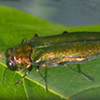 The invasive insect has made its way to its 79th county, Sullivan County. It was recently spotted in Jennings, Pike, Scott, Spencer and Warrick counties. There are only a few counties in southern Indiana that have not been affected by the Emerald Ash Borer (EAB). In order to slow the spread of the EAB, the Indiana Department of Natural Resources (DNR) has restricted the movement of ash trees, limbs and untreated ash lumber with bark attached or any cut hardwood lumber of any species with bark attached. Visitors to DNR properties may only bring in firewood that has been certified by the USDA or DNR Division of Entomology and Plant Pathology or is free of bark. Homeowners should also be aware of this invasive species. To learn more about the EAB and what signs to look for if your tree is infected, take a look at the resources below.
The invasive insect has made its way to its 79th county, Sullivan County. It was recently spotted in Jennings, Pike, Scott, Spencer and Warrick counties. There are only a few counties in southern Indiana that have not been affected by the Emerald Ash Borer (EAB). In order to slow the spread of the EAB, the Indiana Department of Natural Resources (DNR) has restricted the movement of ash trees, limbs and untreated ash lumber with bark attached or any cut hardwood lumber of any species with bark attached. Visitors to DNR properties may only bring in firewood that has been certified by the USDA or DNR Division of Entomology and Plant Pathology or is free of bark. Homeowners should also be aware of this invasive species. To learn more about the EAB and what signs to look for if your tree is infected, take a look at the resources below.
Resources
Emerald Ash Borer Found in Sullivan and Greene Counties, WBIW.com
Arrest That Pest! – Emerald Ash Borer in Indiana, The Education Store
Invasive Insects, Got Nature?
Emerald Ash Borer, Indiana Department of Natural Resources
Emerald Ash Borer in Indiana, Purdue Extension
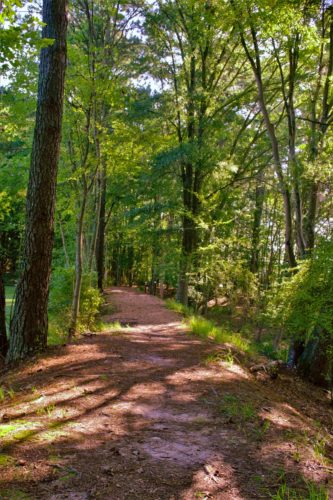 The Washington Post has published an article stating that experts fear how smaller parcels of forest owned, combined with an increase in the number of owners, will affect the long-term health of the American woodlands. With smaller parcels of land, owners are less likely to invest in forest management plans because managing wildlife is more difficult compared to a larger parcel of land. Also the average age of those who privately own forest land is 62.5. The article pointed out how the best and most important thing to do is bridge the gap between the generations, so parents and children talk to each other and know what they want. The restoration of the forest land will benefit many generations to come.
The Washington Post has published an article stating that experts fear how smaller parcels of forest owned, combined with an increase in the number of owners, will affect the long-term health of the American woodlands. With smaller parcels of land, owners are less likely to invest in forest management plans because managing wildlife is more difficult compared to a larger parcel of land. Also the average age of those who privately own forest land is 62.5. The article pointed out how the best and most important thing to do is bridge the gap between the generations, so parents and children talk to each other and know what they want. The restoration of the forest land will benefit many generations to come.
View the full article “Experts Fear For Long-Term Health of U.S. Forests” at The Washington Post’s website.
Resources
State Forest Management Guides, Indiana DNR
Forest Health, Indiana DNR
A Landowner’s Guide to Sustainable Forestry: Part 2: Planning for the Future, The Education Store
Got Nature?
Department of Forestry and Natural Resources, Purdue University
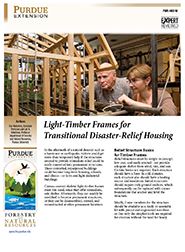 In the aftermath of a natural disaster such as a hurricane or earthquake, victims could get more than temporary help if the structures erected to provide immediate relief could be easily converted into permanent structures. These converted repurposed buildings could become long-term housing, schools and clinics—or farm and light-industrial buildings. This six-page publication describes two different approaches to building canvas-covered, skeletal, light-timber frames to meet this need.
In the aftermath of a natural disaster such as a hurricane or earthquake, victims could get more than temporary help if the structures erected to provide immediate relief could be easily converted into permanent structures. These converted repurposed buildings could become long-term housing, schools and clinics—or farm and light-industrial buildings. This six-page publication describes two different approaches to building canvas-covered, skeletal, light-timber frames to meet this need.
Light-Timber Frames for Transitional Disaster-Relief Housing is available as a free download at The Education Store.
Resources
First Steps to Flood Recovery, The Education Store
Disaster Recovery, IN.gov
Eva Haviarova, Associate Professor of Wood Products
Department of Forestry and Natural Resources
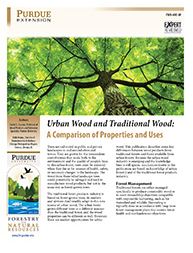 Trees are cultivated in public and private landscapes in and around cities and towns. They are grown for the tremendous contributions they make both to the environment and the quality of people’s lives. In this urban forest, trees must be removed when they die or for reasons of health, safety or necessary changes in the landscape. The wood from these felled landscape trees could potentially be salvaged and used to manufacture wood products but not in the same way as forest-grown trees. This publication describes some key differences between wood products from traditional forests and those available from urban forests.
Trees are cultivated in public and private landscapes in and around cities and towns. They are grown for the tremendous contributions they make both to the environment and the quality of people’s lives. In this urban forest, trees must be removed when they die or for reasons of health, safety or necessary changes in the landscape. The wood from these felled landscape trees could potentially be salvaged and used to manufacture wood products but not in the same way as forest-grown trees. This publication describes some key differences between wood products from traditional forests and those available from urban forests.
Urban Wood and Traditional Wood: A Comparison of Properties and Uses is available at The Education Store as a free download.
Resources
Lumber from Hardwood Trees, The Education Store
Winterize Your Trees, The Education Store
Lumber from Urban and Construction-Site Trees, The Education Store
Indiana’s Urban Woodlots, The Education Store
Dan Cassens, Professor of Wood Products and Extension Specialist
Department of Forestry and Natural Resources
Edith Makra, Chairman
Illinois Emerald Ash Borer Wood Utilization Team
Logs need to be at least 8 inch diameter inside bark small end, at least 8 feet long and straight and sound. Good grade logs do not develop until you get into at least the 14 inch diameter range and up. To be commercial, you will need at least a semi load. The issue here is hauling as well as the need to have a loader to load the semi.
If the above is not an option, you might go to the Wood-Mizer website and search for a sawyer. You will likely find one that would saw the logs for you and maybe one that would be interested in smaller quantities of logs.
You might also check with any local sawmill operation or district forester.
Resources
Wood-Mizer (Find a local portable sawmill service)
Indiana District Foresters
Forestry and Natural Resources Extension Workshops (Hardwood Lumber workshop)
The Education Store (Search the keyword “lumber” to find a large list of resources)
Dan Cassens, professor of wood products
Department of Forestry and Natural Resources
Purdue University
As foresters, woodland owners and tree and wildlife enthusiasts, we hear the word safety and immediately think about making sure our hard hat is packed, our gas tank is full, our cell phone is charged and we have a buddy to call in case of an emergency. How many of us think about diseases? Who thinks about West Nile Virus (WNV) or Eastern Equine Encephalitis (EEE)? For those of us that take our pets into the field, WNV and EEE are very real threats. West Nile Virus originated in Africa but spread quickly throughout the United States after an outbreak in New York in 1999. By 2003, 46 states had been infected, and nearly 10,000 people had fallen ill.
Although not contagious by contact with an infected person or animal, a protective layer is recommended when handling potential infected subjects. Most infected humans show no symptoms while a minority exhibit fevers, headaches, skin rashes, meningitis or encephalitis. Very few people die from WNV (< 1:1,000), but precautions should always be taken to prevent exposure. A total of 156 cases of WNV have been reported in Indiana this year with one sample being human. Other cases have been found in bordering states with 741 cases (mosquito) in Illinois, two mosquito and four human cases in Michigan, 64 mosquito cases in Ohio and zero cases of any kind in Kentucky as of August 20, 2013.
Eastern Equine Encephalitis is a rare viral disease that can be transmitted from host mosquitoes to a number of other animal species. Historical accounts of the disease show that in Midwestern states, EEE is most often found in southwestern Michigan; however, infected horses in Indiana have been found. EEE infects nearly all game birds, amphibians and reptiles, and last year in Michigan, an 8-week-old puppy.
Humans are not immune to EEE. Nearly 30% of people that develop the disease die, and approximately 50% of survivors have permanent neurological complications. Symptoms of infection may or may not occur and will often take between three and 10 days to be realized. EEE symptoms in humans range from fever, headache and nausea to abdominal pain, paralysis, seizures and fainting. An elderly woman in New England died on August 21, 2013, and was the first human casualty of the disease this year. A vaccine has been developed to prevent EEE in horses; however, no vaccine or treatment is available to protect humans or other animals from EEE or WNV. Elimination of standing water is our only defense against potential EEE and WNV threats.
As the summer is in full swing and more and more of us head out to the field, please do not forget to protect yourself and your pets from potential exposure to mosquitoes.
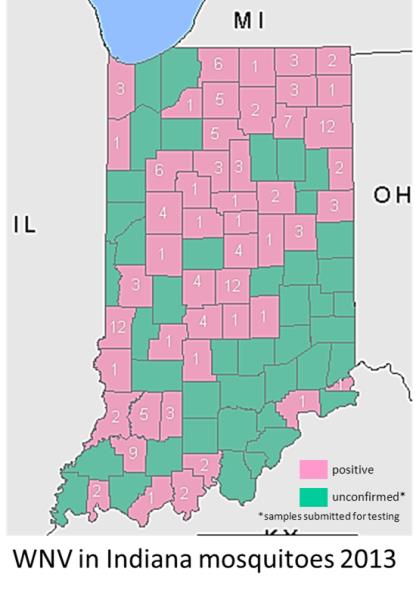
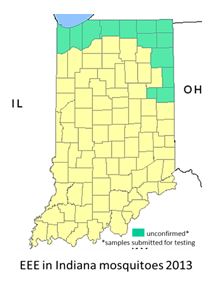
Sourced Information:
Beasley, D.W.C. et al. (2013) Resurgence of West Nile neurologic disease in the United States in 2012: What happened? What needs to be done? Antiviral Research 99:1–5.
Wendell, L.C. et al. (2013) Successful Management of Severe Neuroinvasive Eastern Equine Encephalitis. Neurocrit Care 19:111–115.
USGS Disease Maps
Van Buren County Horse Dies of Eastern Equine Encephalitis, Horse Owners Urged to Vaccinate Animals, MLIVE Media Group
Weymouth Officials Urge Caution After EEE Death, The Patriot Ledger
Resources
Mosquitoes, Purdue Extension Entomology
Shaneka Lawson, Plant Physiologist
Hardwood Tree Improvement and Regeneration Center (HTIRC)
Department of Forestry and Natural Resources, Purdue University
 As the Cooperative Extension Service nationwide celebrates its centennial this year, Purdue Extension director Jason Henderson discusses what the next 100 years may hold in this interview for Connections NOW! The article, Looking To The Next 100 Years of Extension, is part of a series commemorating the 100th anniversary of the 1914 Smith-Lever Act, which created the Cooperative Extension Service at land-grant universities across the United States.
As the Cooperative Extension Service nationwide celebrates its centennial this year, Purdue Extension director Jason Henderson discusses what the next 100 years may hold in this interview for Connections NOW! The article, Looking To The Next 100 Years of Extension, is part of a series commemorating the 100th anniversary of the 1914 Smith-Lever Act, which created the Cooperative Extension Service at land-grant universities across the United States.
Additional articles in the series:
First Family of Extension Keeps History Alive
A Look At The First 100 Years of Purdue Extension
Centennial Gardens To Spruce Up Governor’s Residence
Check out this illuminating video: What is Purdue Extension?
Recent Posts
- Purdue Extension Showcase- Hardwood University Ensures Sustainable Management
Posted: October 4, 2023 in Forestry, Wood Products/Manufacturing, Woodlands - Check Out the Indiana Woodland Steward Newsletter
Posted: July 13, 2023 in Forestry, Timber Marketing, Wildlife, Wood Products/Manufacturing, Woodlands - Indiana Woodland Steward, Your Forest and Wildlife Resource
Posted: March 7, 2023 in Forestry, Timber Marketing, Wildlife, Wood Products/Manufacturing, Woodlands - Intro to Trees of Indiana: Basswood
Posted: April 29, 2022 in Forestry, Forests and Street Trees, Wood Products/Manufacturing, Woodlands - Intro to Trees of Indiana: Quaking Aspen
Posted: April 11, 2022 in Forestry, Forests and Street Trees, Wood Products/Manufacturing, Woodlands - Purcell’s Tree Microinjector Earns Excellence in Technology Transfer Award
Posted: April 6, 2022 in Forestry, Urban Forestry, Wood Products/Manufacturing - New ANR Program Leader joins Purdue Extension
Posted: March 4, 2022 in Timber Marketing, Wood Products/Manufacturing - South Bend Tribune – Michiana pine trees are loaded with cones that will soon hit the ground. Here’s why.
Posted: September 20, 2021 in Forestry, Wood Products/Manufacturing, Woodlands - New Facebook Resource: Let the Sun Shine Indiana
Posted: August 23, 2021 in Forestry, Timber Marketing, Wood Products/Manufacturing, Woodland Management Moment, Woodlands - Will the Emerald Ash Borer Survive the Winter Cold?
Posted: February 14, 2019 in Invasive Insects, Safety, Urban Forestry, Wildlife, Wood Products/Manufacturing, Woodlands
Archives
Categories
- Alert
- Aquaculture/Fish
- Aquatic/Aquaculture Resources
- Ask the Expert
- Christmas Trees
- Community Development
- Disease
- Drought
- Forestry
- Forests and Street Trees
- Gardening
- Got Nature for Kids
- Great Lakes
- How To
- Invasive Animal Species
- Invasive Insects
- Invasive Plant Species
- Land Use
- Natural Resource Planning
- Nature of Teaching
- Plants
- Podcasts
- Ponds
- Publication
- Safety
- Timber Marketing
- Uncategorized
- Urban Forestry
- Webinar
- Wildlife
- Wood Products/Manufacturing
- Woodland Management Moment
- Woodlands